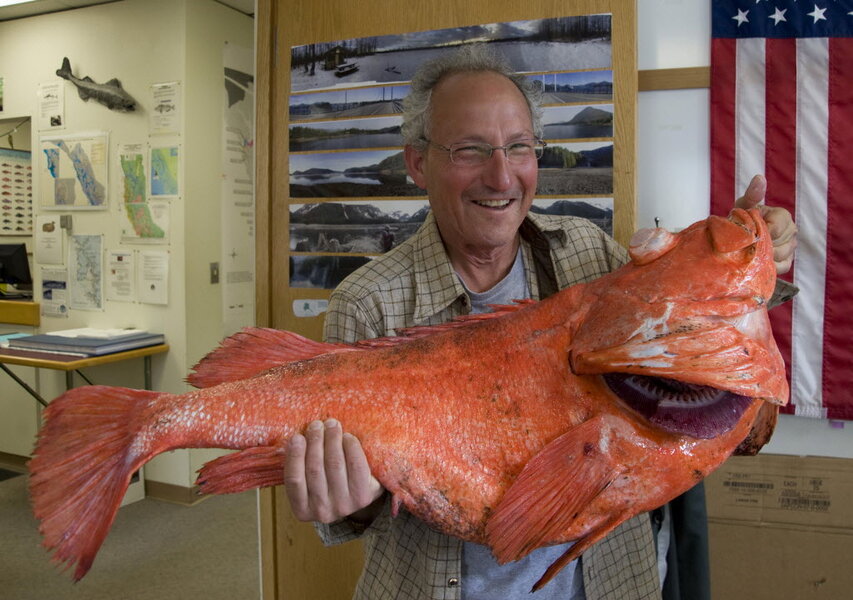200-year-old rockfish caught off Alaska coast
Loading...
Long before Alaska was a state, a fish was born there. And for 200 years that fish lived off Alaska’s coast, oblivious to the centuries of national and personal dramas that played out nearby. Until now.
A Seattle resident has caught a 39-pound, 41-inch-long shortracker rockfish that is estimated to be some two centuries old. If the age is correct, then it will be the oldest shortracker ever caught, as well as one of the oldest fish ever caught, the Daily Sitka Sentinel reported. The fisherman, Henry Liebman, has now passed the fish to the Alaska Department of Fish and Game for age verification, the Sentinel said.
The Rockfish – which looks like a goldfish that has magically enlarged and burst from its bowl – are common off Alaska, as well as near the coasts of eastern Russia and northern California. The shimmering, neon orange, and somewhat bloated looking fish is generally found either alone or in small groups at a depth of between about 990 ft. to 1,650 ft., with old fish deeper than their younger counterparts, preying on small crustaceans that live on underwater boulder fields.
The Shortraker rockfish are thought to average in lifespan about 120 years and to be the second-longest-living of all the varieties of rockfish, with the Rougheye species topping the lifespan list at some 140 years. That means rockfish are some of the world’s oldest living fish, matched only by equally long-lived fish like the sturgeon, an ancient fish found in North America that can live to be more than a century old.
“Rockfish are way out at one extreme in terms of lifespan,” said James Haynes, a professor of Environmental Science & Biology at SUNY Brockport. Of the worlds some 25,000 identified species of fish, most fish live just some 2-10 years, he said.
But even by rockfish standards, this latest catch is unusually old.
“This is an extraordinarily old individual," said Haynes "The vast majority of rockfish won't live to 200 – this fish had a certain genetic endowment, and it didn’t get sick and it didn’t get eaten.”
The fish’s size likely also played into its old age, since size is often correlated to age in fish, said Dr. Haynes. The previous record age for a caught rockfish was about 175-years-old, and that fish, at about 32.5-inches-long, was smaller than this latest catch.
Fish age is usually determined using the animal’s otoliths – its earbones – as those bones contain a record of seasonal growth patterns, much as do tree rings. Since in temperate zones fish grow more in the summer than they do in winter, patterns in the otoliths suggest how many full years that fish has weathered, with alternating wide summer zones and narrow winter zones.
Those patterns are less discernable in polar zones, and even less so in tropical zones, where there is less seasonal variation in temperature, said Dr. Haynes. A fish caught in Alaska, at the boundary between the temperate and polar zones, likely experiences enough temperature change that its otoliths can be read for its age, he said.
.








